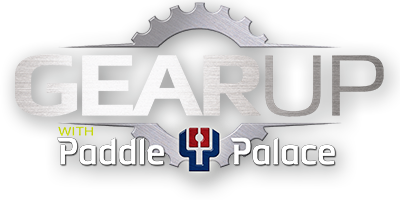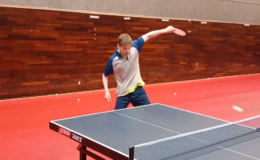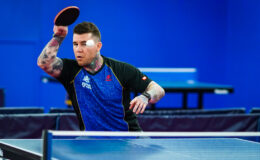By Larry Hodges, USATT Hall of Famer and Certified National Coach
You don’t need to be a chopper to win with backspin, even in this modern age of topspin. Backspin will always have its place, when used properly. Of course, even attackers often serve backspin, hoping for a pushed return (backspin) that they can loop. However, when should an attacking player use backspin in a rally?
Backspin Against Topspin: Chopping (which is backspin against an incoming topspin) can be tricky, especially with a fast attacking racket, and so usually an attacker will use backspin only against an incoming backspin, i.e. a push. There is one main exception. If you are forced off the table, and attack from the wide forehand, an opponent may quick-block to your backhand. Ideally, you can attack this as well, either backhand hitting or looping. However, if you are out of position and have to reach for the ball, a better answer might be a backhand chop. This keeps you in the rally, gives you time to get back into the point, and it may throw off the opponent’s timing.
Short Pushes: If you push short (so the ball would bounce twice on opponent’s side of the table if given the chance), then your opponent can’t loop it. If you keep it low, it’s very difficult to attack effectively, and will usually result in a pushed return that you can attack. Key to this is keeping the ball very low to the net. Don’t just dink the ball back; brush it back lightly with backspin, which will make it easier to keep the ball low and short. Learn to change directions at the last second, dropping the ball short to the middle, left, or right. Short pushes are especially effective if you push both long and short, so opponent never knows what’s coming.
Long Pushes: There are many ways an attacker can win with long pushes. The key to long pushes is to push quick, low, heavy, deep, and at wide angles (or to the middle against some two-winged players). You should also often aim one way, and at the last second change directions. (So aim to the backhand and go quick to the forehand, or vice versa.) Here are some other ways to win with long pushes:
- A quick push rushes an opponent, forcing mistakes and weak shots.
- Heavy backspin gives many opponents trouble, forcing mistakes and weak shots.
- Against an opponent who doesn’t attack backspin well and often pushes (such as many choppers or blockers), pushing allows you to pick and choose which shot you want to attack.
- They force an opponent to drop their racket and shoulder to lift the ball, throwing off their timing not only on that shot, but on the next shot.
- If an opponent attacks a push to the backhand with the forehand, you can quick-block to the often open wide forehand – and if they get to that, you can quick-block again to the wide backhand. Also, after looping from the backhand corner, many opponents anticipate a block to the wide forehand, so a quick block right back to the backhand catches them. The same tactics often work against a player who opens with a backhand loop from the backhand side.
- A quick push to the wide forehand can catch an opponent off guard, and if he does attack it, you can then quick-block to the wide backhand. If he moves quickly to cover that, a second quick-block to the wide forehand can catch him moving the wrong way.
- They slow down play, thereby throwing off an opponent’s timing.
Happy Backspinning!



